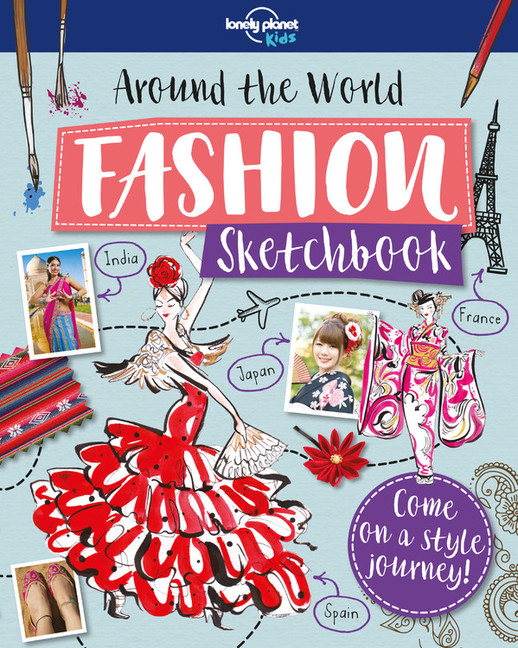Description
From the Indian sari and Mexican Day of the Dead costumes, to Chinese wedding dresses and Scottish tartan, we take kids on a seriously stylish journey to discover the fashion, clothes and fabrics worn by different cultures around the world. Full of fun activities, there’s plenty of space for kids to get creative and design their own outfits.
Lonely Planet’s Around the World Fashion Sketchbook explores many of the planet’s most famous and iconic clothing styles. Children will get to visit Brazil’s amazing Carnival and marvel at its colorful samba dancers, meet Indian women and their beautiful patterned saris, get streetwise with New York’s hip-hop scene, take to the saddle in a poncho with Argentina’s cowboys, and lots more.
Inside, kids will discover:
- The stories behind colors, festival dresses and fabric patterns
- Fun and amazing facts about people, culture and their clothing
- Lots of space to doodle, design and color in their own outfits
About Lonely Planet Kids: Lonely Planet Kids – an imprint of the world’s leading travel authority, Lonely Planet – published its first book in 2011. Over the past 45 years, Lonely Planet has grown a dedicated global community of travelers, many of whom are now sharing a passion for exploration with their children. Lonely Planet Kids encourages the next generation of global citizens to learn about the world around them with engaging books on culture, sociology, geography, nature, history, space and more. Whether at home, in school or on the road, every day can be an adventure. Come explore!
“This interactive sketchbook provides global inspiration for aspiring fashion designers by highlighting clothing styles in 27 countries. Spreads show photographs of individuals dressed in distinctive, often traditional fashions, as well as colorful line drawings, and they provide space for readers to make their own designs. In addition to learning about world fashions, readers will glean cultural and historical insights: “In China, the colors used in clothes are influenced by the ancient Theory of the Five Elements.” While the fashions aren’t universally representative of individual regions, they will give readers a sense of the overarching diversity in styles of dress worldwide.”—Publishers Weekly





